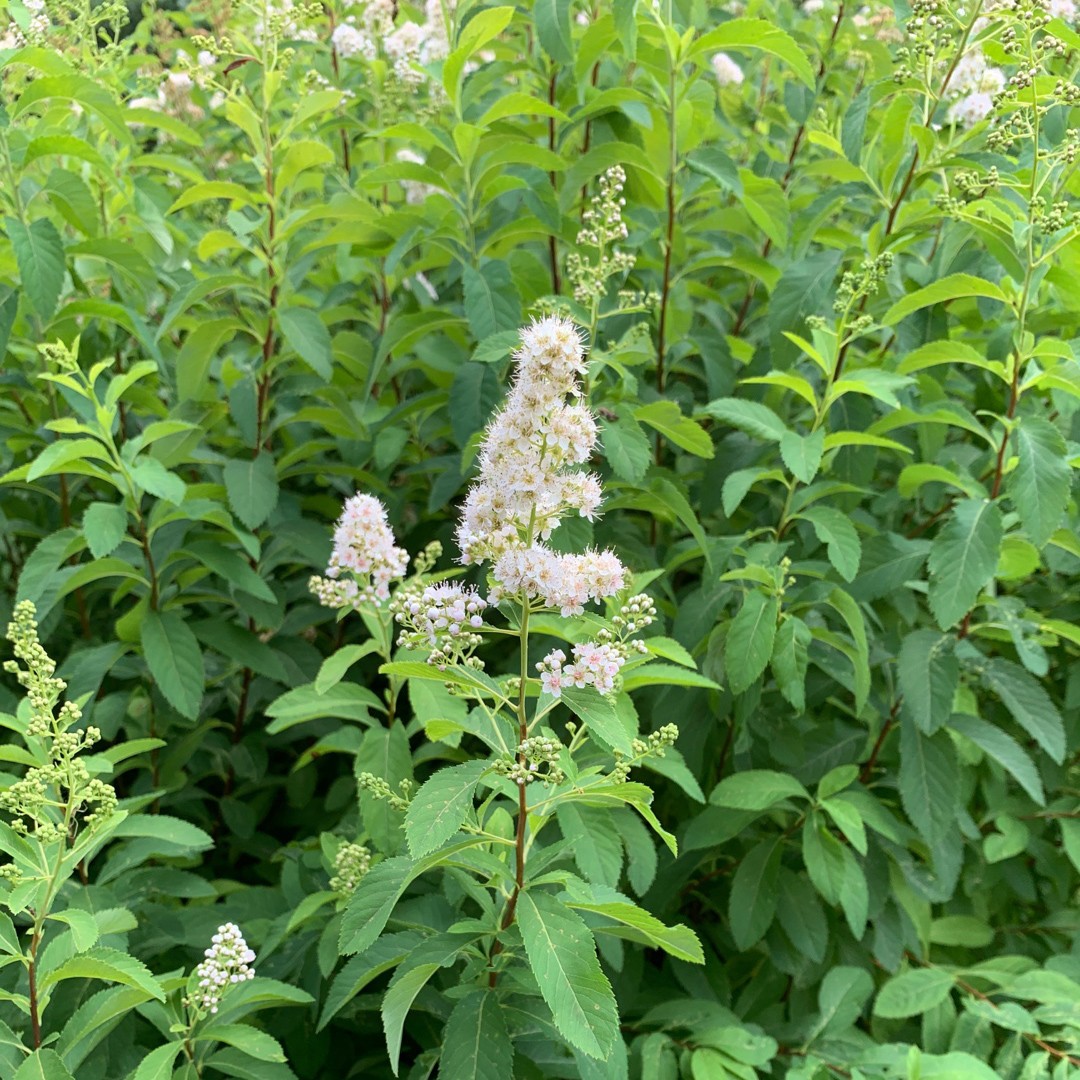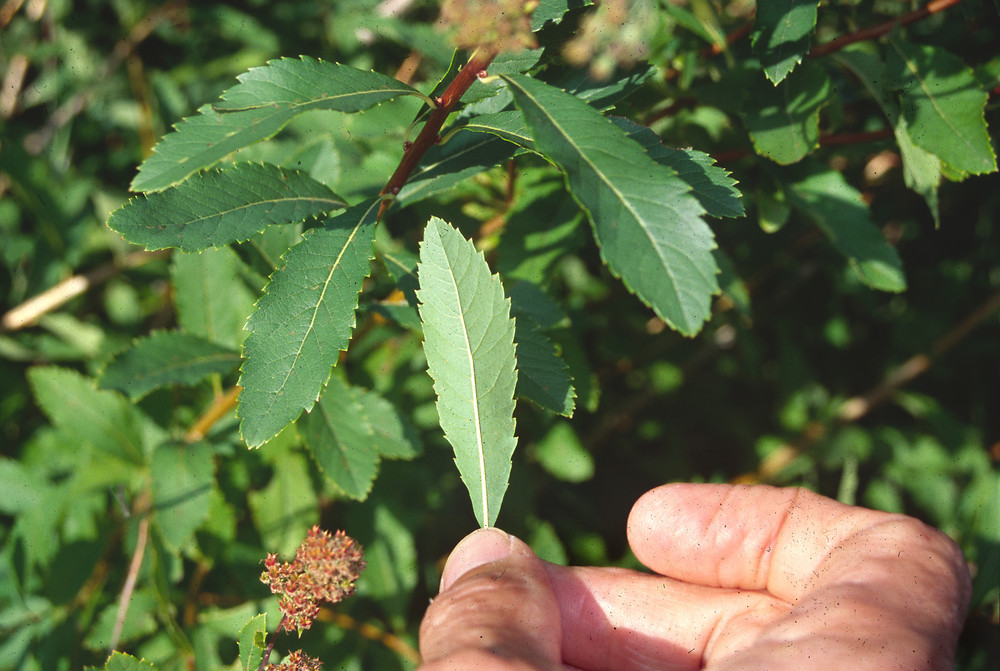Spiraea Alba: The Ultimate Guide To Growing And Caring For This Beautiful Shrub
Spiraea Alba: The Ultimate Guide to Growing and Caring for This Beautiful Shrub
Spiraea alba, also known as white spirea, is a beautiful and versatile shrub that is easy to grow and care for. It is a popular choice for gardens in all parts of the country, and it can be used in a variety of different settings.
In this blog post, we will provide you with the ultimate guide to growing and caring for spiraea alba. We will cover everything from choosing the right location to planting and pruning. We will also provide you with some tips on how to keep your spiraea alba healthy and looking its best.
Introduction
Spiraea alba is a deciduous shrub that can grow up to 6 feet tall and 4 feet wide. It has white flowers that bloom in the spring and summer. The flowers are arranged in small clusters, and they give off a sweet fragrance.
Spiraea alba is a hardy plant that can tolerate a wide range of conditions. It prefers full sun, but it can also tolerate partial shade. It is also drought-tolerant, once it is established.
Choosing the Right Location
The first step to growing spiraea alba is to choose the right location. Spiraea alba prefers full sun, but it can also tolerate partial shade. It is important to choose a location that gets at least 6 hours of sunlight per day.
Spiraea alba also prefers well-drained soil. If your soil is heavy or clayey, you will need to amend it with sand or compost.
Planting
Once you have chosen the right location, you can plant your spiraea alba. Dig a hole that is twice as wide and as deep as the root ball. Backfill the hole with soil, and water it well.
Pruning
Spiraea alba is a low-maintenance shrub, but it will benefit from some light pruning. You can prune your spiraea alba in the spring or fall.
In the spring, you should remove any dead or diseased branches. You can also thin out the shrub to improve air circulation.
In the fall, you can prune your spiraea alba to shape it. You can also remove any branches that have become too long or straggly.
Fertilizing
Spiraea alba does not need to be fertilized often. You can fertilize your spiraea alba once a year in the spring with a balanced fertilizer.
Watering
Spiraea alba is drought-tolerant once it is established. However, young plants will need to be watered regularly. Water your spiraea alba deeply once a week.
Pests and Diseases
Spiraea alba is a relatively pest-free plant. However, it can be susceptible to a few pests, such as aphids and spider mites. If you see any pests on your spiraea alba, you can treat them with insecticidal soap or neem oil.
Spiraea alba is also susceptible to a few diseases, such as powdery mildew and rust. If you see any signs of disease, you can treat them with a fungicide.
Conclusion
Spiraea alba is a beautiful and easy-to-grow shrub that can add a touch of elegance to any garden. With proper care, your spiraea alba will thrive for many years to come.
Spiraea alba, also known as meadowsweet, is a beautiful and versatile shrub that is native to Europe and Asia. It is known for its delicate white flowers, which bloom in early summer. Spiraea alba is a relatively easy plant to care for and can be grown in a variety of soils. It is also deer-resistant, making it a good choice for gardens in areas with high deer populations.
If you are interested in learning more about Spiraea alba, I encourage you to visit Garden Wiki. This website has a wealth of information about the plant, including its history, cultivation, and care. You can also find photos of different Spiraea alba cultivars, as well as tips on how to choose the right one for your garden.
FAQ of spiraea alba
- What is Spiraea alba?
Spiraea alba, also known as meadowsweet, is a deciduous shrub that is native to Europe and Asia. It has white flowers that bloom in the spring and early summer. Spiraea alba is a popular ornamental plant, and it is also used for medicinal purposes.
- What are the uses of Spiraea alba?
Spiraea alba has a number of uses, including:
- Ornamental: Spiraea alba is a popular ornamental plant, and it is often used in gardens and landscaping. It is available in a variety of cultivars, with different flower colors and sizes.
- Medicinal: Spiraea alba has been used for medicinal purposes for centuries. The leaves and flowers of the plant can be used to make tea, which is said to have a number of health benefits, including reducing inflammation, relieving pain, and improving digestion.
- Stabilization: Spiraea alba is a good choice for stabilizing stream banks and shorelines. The roots of the plant help to prevent erosion.
- How to care for Spiraea alba?
Spiraea alba is a relatively easy plant to care for. It prefers full sun or partial shade, and it can tolerate a variety of soil types. The plant should be watered regularly, especially during the summer months. Spiraea alba does not require a lot of fertilizer, but it may benefit from a light application of compost in the spring.
- What are the common problems with Spiraea alba?
Spiraea alba is a relatively problem-free plant. However, it may be susceptible to a few pests and diseases, including:
- Aphids: Aphids are small, sap-sucking insects that can cause leaves to curl and distort. They can be controlled with insecticidal soap or neem oil.
- Powdery mildew: Powdery mildew is a fungal disease that causes a white, powdery growth on leaves. It can be controlled with a fungicide.
- Rust: Rust is a fungal disease that causes orange or brown spots on leaves. It can be controlled with a fungicide.
- How to propagate Spiraea alba?
Spiraea alba can be propagated by seed, division, or cuttings. Seed propagation is the least successful method. Division is the most successful method, and it is done in the spring or fall. Cuttings can be taken in the spring or summer.
Image of spiraea alba
- Spiraea alba flowers taped to a light blue background. This image shows a cluster of white spiraea alba flowers taped to a light blue background. The flowers are in full bloom and have a delicate, airy appearance.

- A close-up of spiraea alba flowers. This image shows a close-up of a few spiraea alba flowers. The flowers are white with a yellow center and have a lacy appearance.

- A spiraea alba plant in full bloom. This image shows a spiraea alba plant in full bloom. The plant is covered in white flowers and has a cascading growth habit.

- A spiraea alba plant in the fall. This image shows a spiraea alba plant in the fall. The plant's leaves have turned shades of yellow, orange, and red.
- A spiraea alba hedge. This image shows a spiraea alba hedge. The hedge is full of white flowers and provides a beautiful backdrop for other plants.

- Spiraea alba leaves. This image shows spiraea alba leaves. The leaves are green and have a serrated edge.

- Spiraea alba seed heads. This image shows spiraea alba seed heads. The seed heads are brown and have a feathery appearance.
- A spiraea alba plant in a garden. This image shows a spiraea alba plant in a garden. The plant is surrounded by other flowers and plants, creating a beautiful display.

- A spiraea alba plant in a vase. This image shows a spiraea alba plant in a vase. The flowers are arranged in a cascading pattern and make a beautiful centerpiece.

- A spiraea alba plant in a landscape. This image shows a spiraea alba plant in a landscape. The plant is surrounded by trees and other plants, creating a natural-looking setting.

Post a Comment for "Spiraea Alba: The Ultimate Guide To Growing And Caring For This Beautiful Shrub"